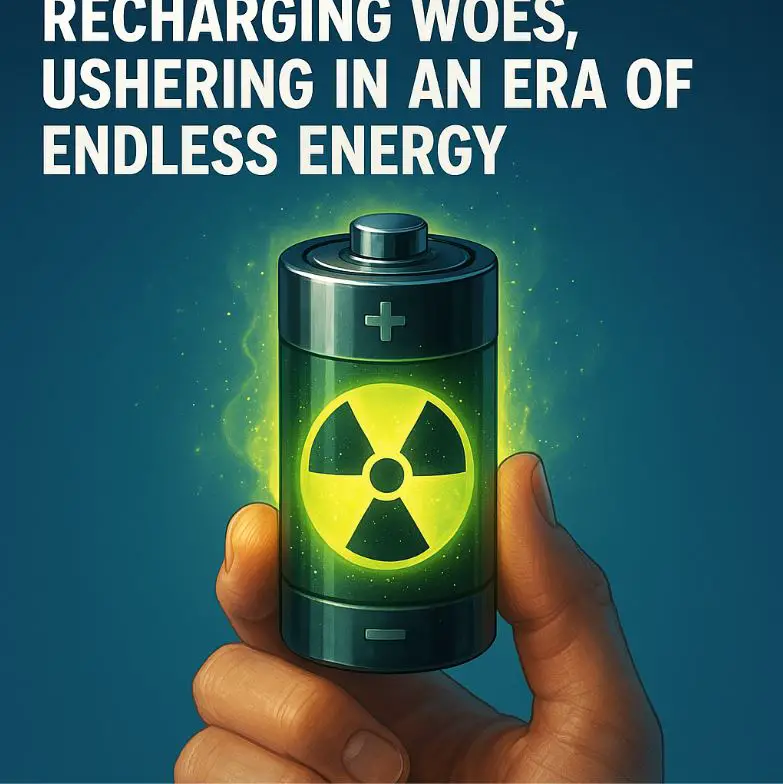
A breakthrough in energy technology could soon eliminate the need for recharging devices, thanks to a newly developed nuclear-powered battery. Researchers at a leading energy institute have unveiled an innovative design that harnesses energy from nuclear decay to generate continuous electrical power. This emerging technology promises a nearly limitless energy supply, potentially transforming consumer electronics, medical devices, and even transportation sectors.
The battery utilizes a small amount of radioactive material safely encased within advanced shielding. By converting the steady energy released during nuclear decay into electricity, the battery is engineered to operate continuously for decades without the need for conventional recharging. Unlike traditional lithium-ion batteries that gradually lose power and require frequent charging, this nuclear-powered alternative could provide an uninterrupted energy source for various applications.
Consumer electronics stand to benefit significantly from this technology. Imagine smartphones, laptops, and wearable gadgets that do not need daily charging, dramatically enhancing convenience and productivity. Similarly, critical medical devices such as pacemakers and implantable defibrillators could operate reliably for many years, reducing the need for invasive battery replacements and lowering overall healthcare costs. Additionally, sectors such as automotive and aerospace could see revolutionary changes, with electric vehicles and satellites operating longer with less maintenance and downtime.
Safety is a primary concern with the use of radioactive materials. The research team has implemented multiple layers of radiation shielding and containment measures to ensure that the radioactive substance remains securely isolated. Extensive laboratory tests and simulations have demonstrated that the battery meets rigorous international safety standards. Regulatory agencies are actively reviewing the technology to ensure that potential risks are mitigated through advanced engineering and strict operational protocols.
Despite the promising advantages, several challenges remain before the nuclear-powered battery can be widely adopted. Obtaining regulatory approvals, addressing public concerns about nuclear technology, and conducting long-term environmental impact studies are essential steps for successful commercialization. Industry experts stress that international cooperation and careful planning will be critical to overcome these hurdles. Nevertheless, the potential for a battery that virtually eliminates recharging requirements has sparked significant excitement among scientists, engineers, and investors worldwide.
As research and development continue, the nuclear-powered battery represents a bold step toward redefining energy sustainability. If successfully implemented, this technology could dramatically reduce battery waste, lower carbon footprints, and usher in a new era of uninterrupted power supply for countless applications, transforming how we think about energy consumption in the modern world.
Looking forward, further research will focus on optimizing the battery’s efficiency and cost-effectiveness. Collaborative projects between governments and private industry are already underway to explore scalable production methods. Continued investments in safety research and public education will be crucial for gaining widespread acceptance of this transformative technology. This progress could redefine our future.
